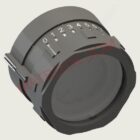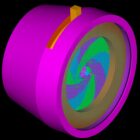? 
JOINT BASE McGUIRE-DIX-LAKEHURST, N.J. — The Army is continuing to inform Integrated Visual Augmentation System (IVAS) network integration by evaluating emerging commercial radio technology that enables data exchange among Soldiers.
A series of experiments this summer at the Army’s annual Network Modernization Experimentation (NetModX) allowed engineers of the Command, Control, Communications, Computers, Cyber, Intelligence, Surveillance and Reconnaissance (C5ISR) Center — a component of Army Futures Command (AFC)’s Combat Capabilities Development Command (DEVCOM) — to help inform Army program offices of potential capability by providing a technical assessment and analysis on the state of available industry radio communication solutions.

IVAS enables greater situational understanding and decision making through high resolution display of sensor, target, and target engagement data. The system provides Soldiers with a single platform to fight, rehearse and train. These unique characteristics require a tactical radio that can provide Soldier-wearable connectivity for the IVAS platform, according to Dan Ku, a C5ISR Center electronics engineer.

“Events like NetModX enable the Army to assess commercial-off-the-shelf radios’ ability to support the IVAS system in terms of scalability and resiliency,” Ku said. “The data from the field event informs the design of the network to support IVAS.”

The C5ISR Center provides engineering support to Army organizations — Project Manager Tactical Radios (PM TR) and PM IVAS — that are making network design considerations by incorporating NetModX results. The event helps the Army validate and verify which performance metrics and requirements are most important leading to the procurement process.
The radios enable Soldiers to pass IVAS data helping to establish a common operating picture (COP) among the unit during a mission. The real-time COP is displayed on the IVAS heads-up display for improved situational awareness.
Engineers are evaluating the performance of each vendor’s radio system for transmitting differing network traffic loads in benign and contested environments, Ku said. Each type of radio must be able to scale to a specific number of units while transmitting data among a team of Soldiers.

“Experimentation gives the Army a holistic picture on how radios perform initially in a lab setting and then during a large-scale field environment like NetModX,” said James Koh, chief of the Center’s Commercial Technology and Integration Branch. “With these complementary experiments, we’re able to produce a comprehensive set of data and radio system characteristics to support Army acquisition decisions. NetModX also serves as a forum for industry partner collaboration.”
By Dan Lafontaine, DEVCOM C5ISR Center Public Affairs
Additional photos by SGT Robert Whitlow, 49th Public Affairs Detachment





























































































































